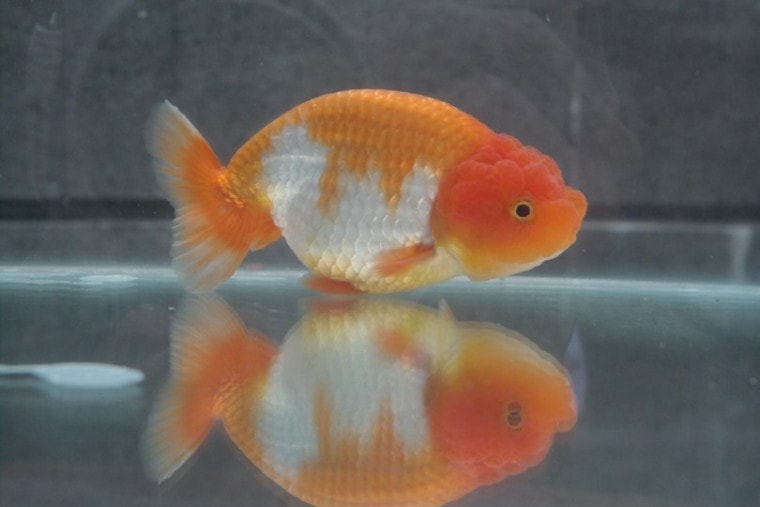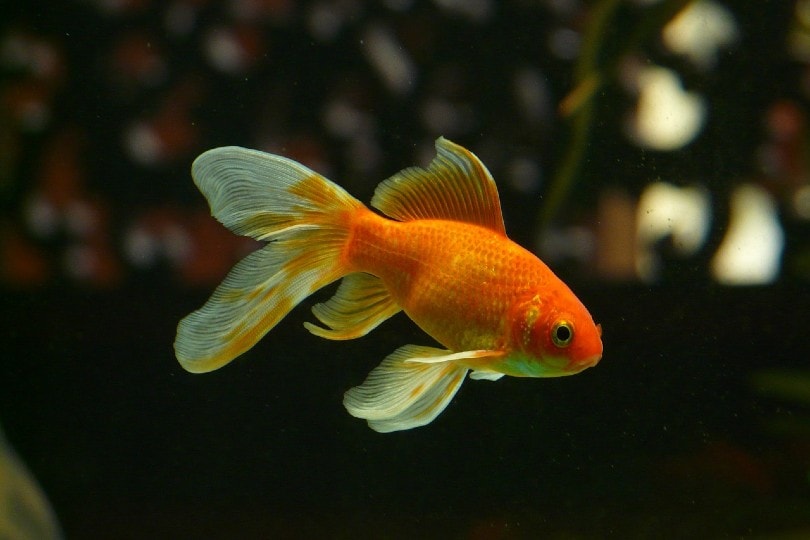
Nearly all pet store goldfish will come with flukes. This is because the parasite will not show itself until the goldfish has a compromised immune system from transportation and the new environment. There are two primary types of flukes, namely gill flukes which are the most common and are caused by the parasite Dactylogrus and body flukes caused by Gyrodactylus.
These parasites are flatworms called trematodes and they have external suckers with hooks to attach to their victim. These hooks carry a deadly bacterium that causes ulcers on the skin of goldfish.
Since goldfish flukes are common in nearly all new goldfish, this article will inform you on how to identify, treat and prevent these unwanted parasites.
 Gill and Body Flukes Explanation
Gill and Body Flukes Explanation
Gill flukes are where the flatworm parasites will lay their eggs and body flukes produce the live young. You will not be able to see flukes without a microscope and a skin scrape is a help underneath. Flukes are white and barely visible on light-colored goldfish, but they can be seen on dark goldfish like black moors. The actual worm is commonly 1 millimeter long when it hatches.
Flukes can become quite serious if they are not identified and treated effectively. Therefore, it is important to quarantine new fish and treat them with a broad-spectrum medication. If one goldfish in the tank has them, the rest will have them too.

Signs of Gill Flukes
The first stage of the fluke parasite will cause the following signs in goldfish:
Signs of Body Flukes
The second stage of flukes will present these signs:
How Goldfish Get Flukes
Since flukes are so common in goldfish, you may be wondering how a goldfish catches these parasites. An infected fish from the purchase is normally the source. This fish will carry the adult flukes that will then lay eggs in the gills of seemingly healthy goldfish. Flukes breed rapidly from goldfish breeding farms and can escape minor treatments.
These goldfish make their way into pet stores, where they infect each other and host the fluke eggs. You then purchase the goldfish and place it in a short quarantine or straight into the tank, where the flukes will feed off the unsuspecting goldfish. In the later stages, the goldfish will begin to show signs and flukes should be treated immediately with the correct medication.
The adult flukes are extremely hard to eradicate and will usually stay on a goldfish with little to no signs being present.
Flukes on Goldfish Fry
If goldfish fry gets flukes, it is quite deadly and can kill off a whole brood in a few days. Small fry are unable to handle the parasites as effectively as adult goldfish that have a fully developed immune system.
The first stage of gill flukes is enough to kill hundreds of goldfish fry. Treating the eggs and fry of goldfish will be different than when treating juvenile or adult goldfish.
Treatment Options
Flukes are not an easy parasite to treat, and most aquatic medications will not be able to kill every adult fluke. Fortunately, there are some remedies and quality aquatic medications on the market to treat the signs of flukes and discourage them from laying eggs.
If your fish isn't behaving or looking as it normally does and you suspect it may be sick, ensure you provide the right treatment, by checking out the best-selling and comprehensive book The Truth About Goldfish on Amazon today.
It has entire chapters dedicated to in-depth diagnoses, treatment options, a treatment index, and a list of everything in our fishkeeping medicine cabinet, natural and commercial (and more!).
 Treatment Sheet
Treatment Sheet
1. Salt Dips
Fill a quarantine tank or container with dechlorinated water. Add in a high dose of aquarium salt, approximately 1 teaspoon per 1 gallon of water, and place the goldfish inside the tank for 30 minutes every 3 hours in the daytime. You want to continue this for at least 4 days. You can also place half a teaspoon of aquarium salt per 5 gallons in the main aquarium. Goldfish are tolerant to low doses of aquarium salt, but flukes are not!

2. Medication
Flukes require a high-quality broad-spectrum medication tailored for parasites in cold water fish. These medications are effective for the treatment of flukes in goldfish, from larvae to the adult stage:
Activated carbon, invertebrates, live plants, and easily stained surfaces should be removed from within the main tank during treatment. Remember to stick to the correct dosage on the labels for effective and safe treatment.
Do not mix medications that can counteract other forms of medication in the tank, it is advisable to mix one or two different brands into the water and add an extra air stone into the tank to help increase oxygen levels.
Methylene blue, aquarium salt, and Cupramine dips should be done for less than one hour and not placed inside of the main tank.
Preventative Measures
Prevention is always better than cure and taking the necessary steps to deter parasites from your fish is the best option. All prevention treatments should be natural and safe for the main tank in the long run. The medications should be formulated as safe for invertebrates, plants, and nitrifying bacteria. Natural medications will not coat the gills and inhibit proper oxygen intake. These are a few preventative measures you can take to make sure your goldfish are not at risk from flukes:
 Final Thoughts
Final Thoughts
Goldfish flukes are common, but treatable with the right medication. As soon as you notice signs of flukes you should act immediately. The earlier you start to treat and diagnose the goldfish, the more successful treatment will be.
Always practice good tank hygiene and do not share equipment from tank to tank, unless you are using a harsh sterilizer in between. Washing your hands with an anti-bacterial soap will stop the spread of various fish diseases to other tanks.
We hope this article has helped you diagnose and treat your goldfish suffering from flukes effectively.
You may also be interested in:
- How to Get Rid of Camallanus Worms in Fish (Step-by-Step Guide)
- Cane Corso St. Bernard Mixed Dog Breed: Info, Pictures, Care & More
Featured Image Credit by: Fourpawspics, Shutterstock

 Gill and Body Flukes Explanation
Gill and Body Flukes Explanation
 Treatment Sheet
Treatment Sheet





